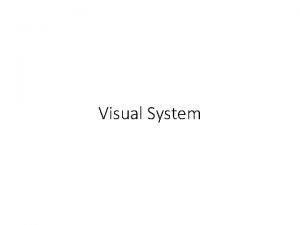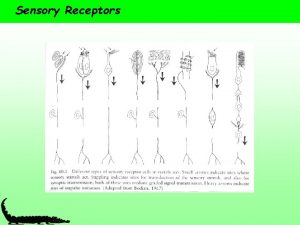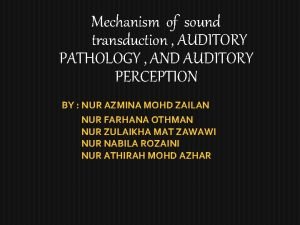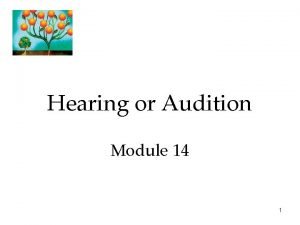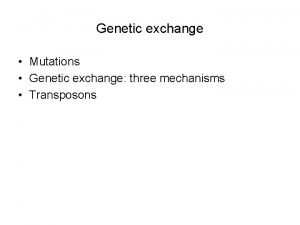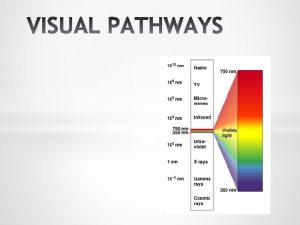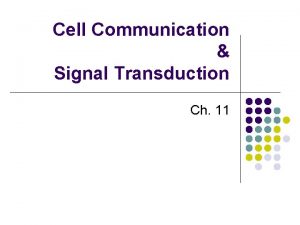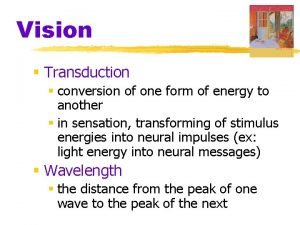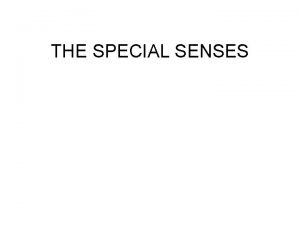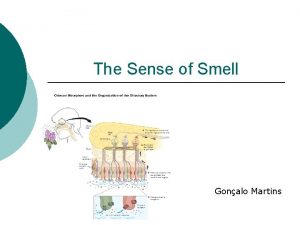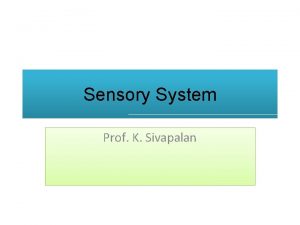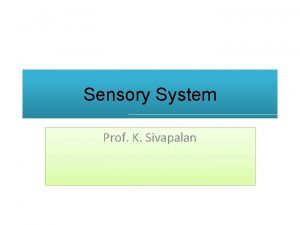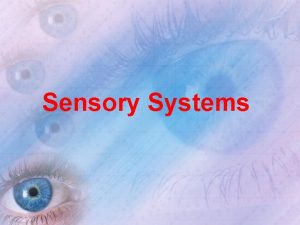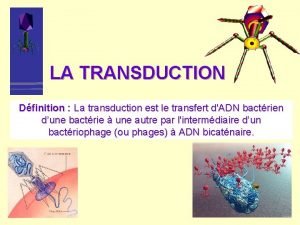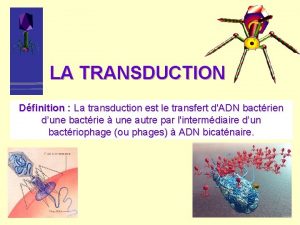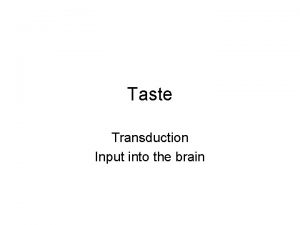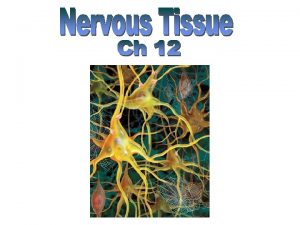Visual System Sensory systems Sensory transduction Receptor potential















- Slides: 15

Visual System

Sensory systems • Sensory transduction • Receptor potential

Visual system anatomy - Eyeball • Light passes through: 1. Conjunctiva 2. Cornea 3. Pupil 4. Lens • Accommodation

Visual system anatomy - Retina • Retina • Rods (scotopic) • Cones (photopic) • Fovea • Optic disk

Visual system anatomy - Retina • Retinal layers 1. Photoreceptor layer 2. Bipolar layer – – Bipolar cells Horizontal and amacrine cells 3. Ganglion cell layer

Sensory transduction • Photoreceptors: • Contain molecules of photopigments • Steadily release glutamate in the dark • Light exposure causes the photopigments break apart, causing a hyperpolarization of the receptor membrane • What happens to glutamate release?

Sensory transduction • Effect of decreased photoreceptor Glu release on bipolar cells (light is on!) • On-center bipolar cells: • Less glutamate is depolarizing • Cells release more glutamate • Off-center bipolar cells: • Less glutamate is hyperpolarizing • Cells release less glutamate • Ganglion cells are always depolarized by glutamate • On-center ganglion cells • Off-center ganglion cells

Primary visual pathway 1. 2. 3. 4. 5. 6. Visual field Retina Optic nerve Optic chiasm Lateral geniculate nucleus Primary visual cortex • The PVC is also called “striate cortex” or V 1 Visual field

Visual processing – Striate cortex • Striate cortex contains a map of the contralateral visual field • Disproportionate representation

Striate cortex integrates information • Each retinal ganglion cell responds to its own receptive field Striate cortex neuron • Portion of the visual field • LGN neurons receive information from multiple retinal ganglion cells • Striate neurons receive information from multiple LGN neurons • Integration allows for visual perception of orientation, movement, depth and color Visual field LGN cell Retinal cells

Visual processing in the striate cortex – Orientation and movement • Orientation-sensitive neurons only respond to objects in a particular spatial placement • Simple cells – detect orientation • Complex cells – detect orientation and movement

Visual processing in the striate cortex – Depth • Binocular vision provides the most acute depthperception • Stereopsis • Retinal disparity • Binocular cells in the visual cortex respond strongly to retinal disparity

Visual association cortex • Striate cortex (V 1) organizes visual information. • Extrastriate cortex (visual association cortex) combines information from V 1 • Perception

Visual association cortex • Two streams of visual information project from V 1 to extrastriate cortex: • Dorsal stream • Movement • Ventral stream • Form • Color http: //www. colorado. edu/intphys/Class/IPHY 3730/image/figure 7 -3. jpg

Visual agnosias • Damage to the visual association cortex can result in a visual agnosia – the inability to perceive or identify a stimulus, despite normal visual sensation • Achromatopsia – damage to the extrastriate cortex in the medial occipital lobe may result in loss of color vision • Akinetopsia - damage to V 5 can result in the inability to perceive movement • Apperceptive visual agnosia – inability to perceive and identify common objects by sight • Prosopagnosia – inability to identify a familiar face
 Striate cortex
Striate cortex Vertebrate sensory receptors
Vertebrate sensory receptors Pogil cellular communication
Pogil cellular communication Transduction in the ear
Transduction in the ear Where does transduction occur in the ear
Where does transduction occur in the ear Pitch in waves
Pitch in waves Dot
Dot Generalized transduction
Generalized transduction Macula image
Macula image Transduction cognitive psychology
Transduction cognitive psychology Cell signal transduction
Cell signal transduction Cell chapter 16
Cell chapter 16 Signal transduction
Signal transduction Transduction psychology
Transduction psychology Olfactory transduction
Olfactory transduction Olfactory transduction
Olfactory transduction
